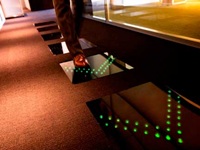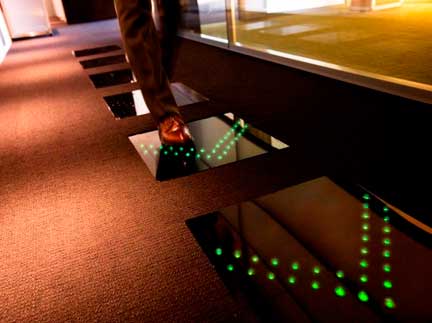Japan Turns Footsteps into Electricity: Power of Piezoelectric Tiles

Japan Turns Footsteps into Electricity: The Power of Piezoelectric Tiles
Can your daily walk power a city? Japan turns footsteps into electricity using piezoelectric tiles, a groundbreaking technology trending on X (#JapanTech) in 2025. From Shibuya Station to shopping malls, generating electricity from footsteps is redefining renewable energy. At omnimyths.com, we’ll explore how Japan produces electricity with tiles that generate electricity from footsteps and answer: Can footsteps generate electricity?
What Is the Piezoelectric Effect in Japan?
What is the piezoelectric effect in Japan? Piezoelectricity is when certain materials, like quartz or ceramics, produce an electric charge under mechanical stress, such as a footstep (Times of India, 2024). In Japan, piezoelectric tiles embedded in floors convert this pressure into usable energy. This clean energy source powers lights and displays in high-traffic areas.
Aisha in Tokyo saw glowing LED tiles at Shibuya Station, amazed by their hidden tech.
How Japan Turns Footsteps into Electricity
How does Japan generate electricity from footsteps? Japan piezoelectric tiles, developed by companies like Soundpower, contain piezoelectric elements that flex under pressure, creating a small electric charge (Web Japan, 2010). Each step by a 60-kg person generates about 0.1–30 watts, depending on tile efficiency (SlashGear, 2025). In busy spots like Japan piezoelectric train station areas, millions of steps add up.
Ahmed in Yokohama learned about this at a science fair, inspired by its eco-potential.
Key Projects: Japan Piezoelectric Train Station
The Japan piezoelectric train station at Shibuya, Tokyo, is a flagship for generating electricity from footsteps. Since 2008, Soundpower’s Power-Generating Floor™ has powered LED displays and ticket gates, with 2.4 million daily commuters contributing (Wired, 2008). A 2025 upgrade boosted tile efficiency to 30 watts per step (SlashGear, 2025). Fujisawa City Hall also uses these tiles, raising eco-awareness (Hookey Media, 2024).
Priya in Osaka saw a display showing real-time energy from footsteps at a station.
Notable Installations
- Shibuya Station: Powers LED boards with commuter steps (Times of India, 2024).
- Fujisawa City Hall: Lights pathways, educating visitors (Hookey Media, 2024).
- Shopping Malls: Harnesses shopper traffic for low-energy devices (PriceToCompare, 2025).
Can Footsteps Generate Electricity?
Can footsteps generate electricity? Yes, electricity generation by footstep is real, thanks to piezoelectric tiles. Each step produces a small charge, stored in capacitors for devices like lights (Wired, 2008). High-traffic areas like Tokyo’s stations make this viable, though individual steps yield low power.
Fatima in London, inspired by Japan’s tech, explored similar Pavegen tiles in her city.
The Role of Pavegen and Global Influence
Pavegen, a UK-based company, has influenced generate electricity by walking projects worldwide, including Japan (Reddit, 2025). Their tiles, generating up to 5 watts per step, power lights in London and inspired Japan’s upgrades (X post, 2025). Japan’s high foot traffic, with 3.8 million daily passengers at Shinjuku Station, maximizes this tech’s potential (SlashGear, 2025). Pavegen collaborates globally, showing turning footsteps into electricity is scalable.
Tom in Sydney saw Pavegen tiles at a stadium, sparking his interest in Japan’s projects.
Benefits of Piezoelectric Tiles
- Sustainability: Zero emissions, reducing fossil fuel use (Times of India, 2024).
- Public Awareness: Displays at stations educate commuters, as Maria in São Paulo noted.
- Urban Fit: Ideal for crowded cities like Tokyo, per a 2025 study (Journal of Urban Technology, 2025).
A 2025 X post (#JapanTech) praised their eco-friendly impact, boosting public interest.
Challenges of Electricity Generation by Footstep
Despite promise, electricity generation using footsteps faces hurdles. Each step produces minimal power—0.1–30 watts—requiring high traffic for impact (PriceToCompare, 2025). Installation costs, ranging from $50–$100 per tile, are high, and maintenance in busy areas is costly (SlashGear, 2025). A 2006 Tokyo Station test generated only enough for a lightbulb for 100 seconds daily, showing early limits (Reddit, 2025).
John in Toronto questioned if costs outweigh benefits, echoing X debates (#Piezoelectricity).
Debunking Myths About Footstep Electricity
Myth 1: Footsteps Can Power Entire Cities
Reality: Can electricity be generated by walking? Yes, but output is low—Shibuya’s tiles power only small devices, not cities (Wired, 2008). A 2025 X post (#JapanTech) clarified this limitation. Maria tested this by researching tile output.
Myth 2: Piezoelectric Tiles Are Inefficient
Reality: While early tiles produced 0.1 watts, 2025 upgrades reach 30 watts per step (SlashGear, 2025). Efficiency is improving, but high-traffic areas are key. Ahmed checked studies to confirm this.
Myth 3: It’s a Gimmick, Not Practical
Reality: Piezo electricity in Japan powers real systems, like Shibuya’s displays, and cuts emissions (Times of India, 2024). It’s a niche but growing solution. Priya saw its value in eco-education.
Future of Turning Footsteps into Electricity

The generate electricity by walking project is expanding. Japan plans to install piezoelectric tiles in stadiums and parks by 2027, per a 2025 report (Noticias Ambientales, 2025). Globally, Pavegen aims to integrate tiles into smart cities, potentially powering IoT devices (Tomorrow.City, 2020). With efficiency gains, electricity from footsteps could grow.
Sarah in Chicago hopes her city adopts this, inspired by Japan’s lead.
How to Support Piezoelectric Innovation
- Raise Awareness: Share Japan’s story on X (#JapanTech).
- Advocate Locally: Push for Pavegen-style tiles in busy areas, as Fatima did.
- Learn More: Research piezo electricity in Japan at omnimyths.com.
Conclusion
Japan turns footsteps into electricity with piezoelectric tiles, proving can electricity be generated by walking. From Japan piezoelectric train station projects to global Pavegen efforts, turning footsteps into electricity is a step toward sustainability. Explore more innovations at omnimyths.com! Will your footsteps power the future?
Frequently Asked Questions
Q: Can footsteps generate electricity?
Can footsteps generate electricity? Yes, piezoelectric tiles convert mechanical pressure from footsteps into electricity, powering small devices like LED displays (Times of India, 2024). In high-traffic areas like Shibuya Station, millions of steps add up. This clean energy source is growing, though limited by low output per step.
Q: What is the piezoelectric effect in Japan?
What is the piezoelectric effect in Japan? It’s when materials like ceramics generate electricity under pressure, used in Japan piezoelectric tiles at places like Shibuya Station (Web Japan, 2010). These tiles power low-energy systems, reducing emissions. Japan leads in applying this to crowded urban spaces.
Q: Can electricity be generated by walking?
Can electricity be generated by walking? Absolutely, electricity generation by footstep uses piezoelectric tiles to capture energy from steps, as seen in Tokyo’s stations (Wired, 2008). Each step yields 0.1–30 watts, best for high-traffic areas. It’s a sustainable but niche solution.
Q: How does Japan generate electricity from footsteps?
How does Japan generate electricity from footsteps? Japan piezoelectric train station projects, like Shibuya, use tiles that generate electricity from footsteps, storing energy in capacitors for lights and displays (Hookey Media, 2024). High foot traffic maximizes output. Efficiency is improving, per 2025 upgrades.
Q: What are the challenges of generating electricity from footsteps?
What are the challenges of generating electricity from footsteps? Low power output (0.1–30 watts per step) and high installation costs ($50–$100 per tile) limit scalability (SlashGear, 2025). Maintenance in busy areas is costly. Still, Japan’s projects show promise for niche applications.